Sangiovese and Chianti docg are two names that often intertwine in the world of wine, evoking images of rolling vineyards and rustic Italian countryside. But what sets these two apart? Are they distinct entities or just different sides of the same coin?
With their origins deeply rooted in Tuscany, these grape varieties have been celebrated for centuries, each offering a unique taste experience.
What Is the Difference: Sangiovese vs Chianti?
Sangiovese and Chianti grapes are two terms often used interchangeably when discussing Italian red wines, but they actually have distinct differences. Sangiovese grapes are native to central Italy, known for its high acidity and medium to full-bodied character. It is widely grown throughout the country and forms the backbone of many popular Italian wines.
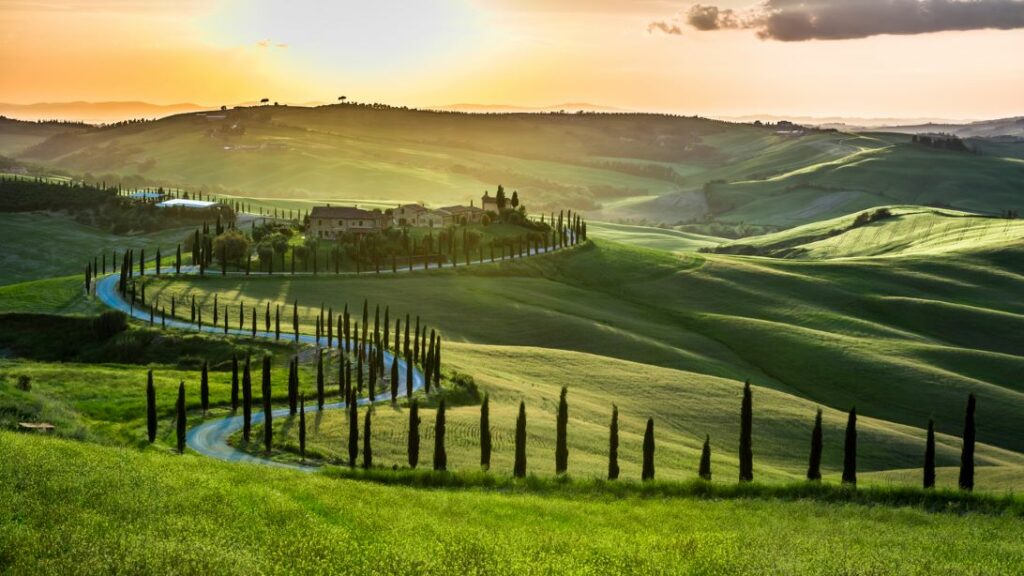
Chianti, on the other hand, refers specifically to a wine region in southern Tuscany, that produces wine primarily from Sangiovese grapes. The Chianti region has strict regulations governing the production of its namesake wine, which must contain at least 80% Sangiovese grapes with the remainder typically made up of other local grape varieties.
While both Sangiovese and Chianti highlight the unique characteristics of this expressive grape, there are notable differences between them. Sangiovese wines offer a range of styles depending on their origin, showcasing diverse flavors such as cherry, violet, tobacco, and herbs. On the other hand, Chiantis tend to display more structure and complexity due to longer aging requirements imposed by traditional winemaking practices in this esteemed Tuscan region.
What Are the Characteristics of the Sangiovese Grape?
While both Sangiovese grapes and Chianti grapes highlight the unique characteristics of this expressive grape, there are notable differences between them. Sangiovese wines offer a range of styles depending on their origin, showcasing diverse fruity flavors such as cherry, violet, tobacco, and herbs.
Characteristics of Chianti Classico
On the other hand, Chiantis tend to display more structure and complexity due to longer aging requirements imposed by traditional winemaking practices in this esteemed Tuscan region.
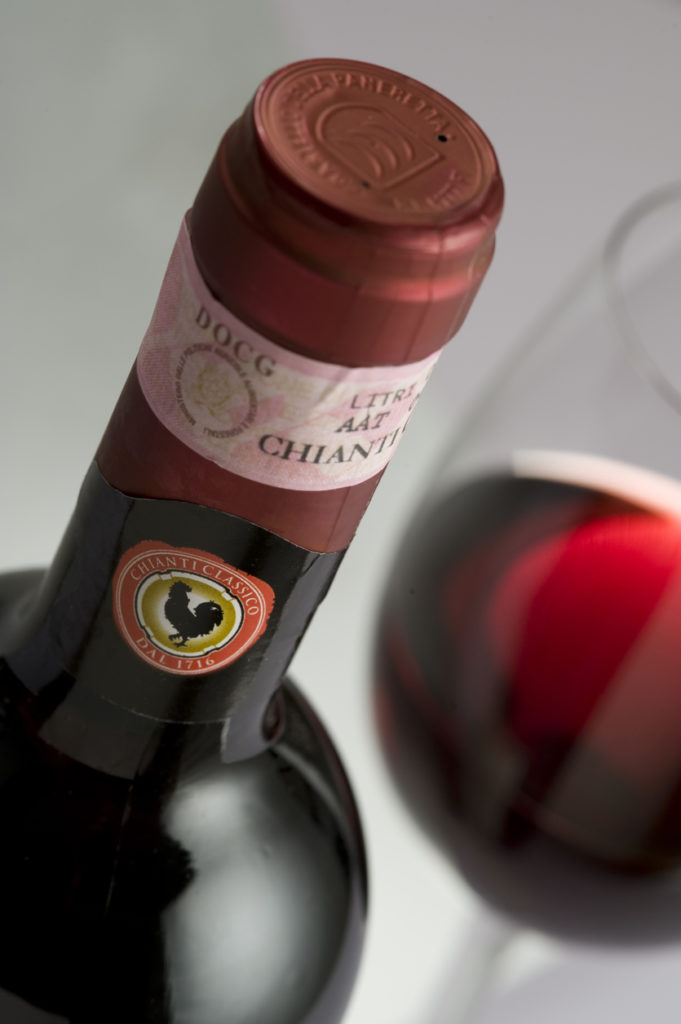
Understanding Chianti Classico
Chianti Classico is a renowned red wine from the heart of Tuscany, Italy. It is made predominantly from the Sangiovese grape, which imparts a remarkable flavor profile that sets it apart from other wines.
What are the different levels of Chianti classico docg
The Chianti Classico DOCG offers a unique hierarchy of quality levels, each with its own distinct characteristics and aging requirements.
Chianti Annata
At the base level is the Chianti Annata, which reflects the typical character of Chianti Classico wines without extensive aging.
Chianti Riserva
Moving up the ladder, we encounter the Chianti Riserva, a step above the Annata in terms of aging and complexity. The Chianti Riserva wines are aged for at least 24 months before release, resulting in richer fruity flavors and more structured tannins.
Chianti Gran Selezione
At the pinnacle stands Chianti Gran Selezione, the most prestigious level within the Chianti Classico system. These top-tier wines are crafted from meticulously selected grapes and aged for a minimum of 30 months to enhance their depth and complexity.
Often matured in oak barrels to further develop nuanced aromas and textures, Gran Selezione exemplifies the artistry and dedication of Chianti Classico’s finest producers.
Food Pairing of Chianti Classico
Pairing food with Chianti Classico can be an adventurous endeavor. While this wine beautifully complements traditional Italian dishes like pasta dishes with mushroom sauce or grilled meats drizzled with olive oil, it also holds its ground against unexpected combinations.
Is Chianti classico spicy food friendly?
Experimenting with pairing Chianti Classico and Asian cuisine or even spicy Mexican dishes can bring forth surprising elements within both the wine and the food. The spicy kick in these dishes finds balanced harmony when paired with the wine’s high acidity and tannins, creating a delightful interplay on your taste buds.
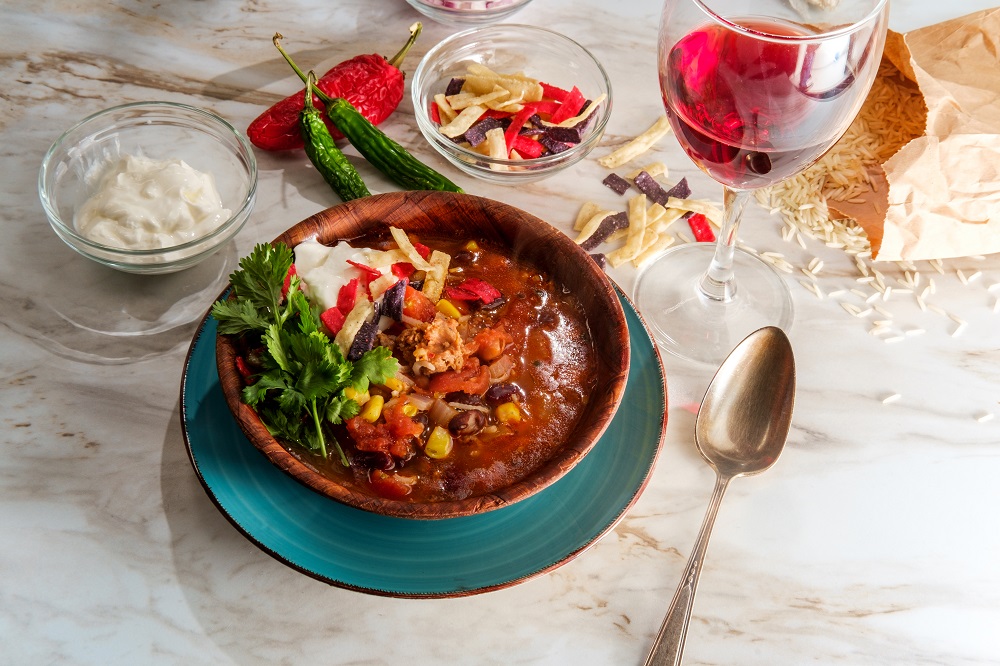
Understanding Sangiovese Wine
Sangiovese wine, known for its vibrant flavors and versatility, is a celebrated Italian red wine varietal. It has found its place in the hearts of wine enthusiasts worldwide, thanks to its remarkable character and ability to pair well with a wide variety of foods.
With aromas ranging from ripe sour cherries and plums to spicy herbs and earthy undertones, the flavor profile of Sangiovese wines is truly captivating.
Chianti DOCG Subzones
Originally hailing from Tuscany one of the most famous italian wine regions, Sangiovese grapes are now cultivated in several regions across Italy. While Chianti and Brunello di Montalcino are perhaps the most famous Sangiovese-based wines synonymous with Tuscany, other regions such as Umbria and Emilia-Romagna have also started producing exceptional bottlings that showcase their unique terroir.
Each region imparts distinct characteristics to the wine, demonstrating how the Sangiovese grape can adapt and thrive in diverse climates.
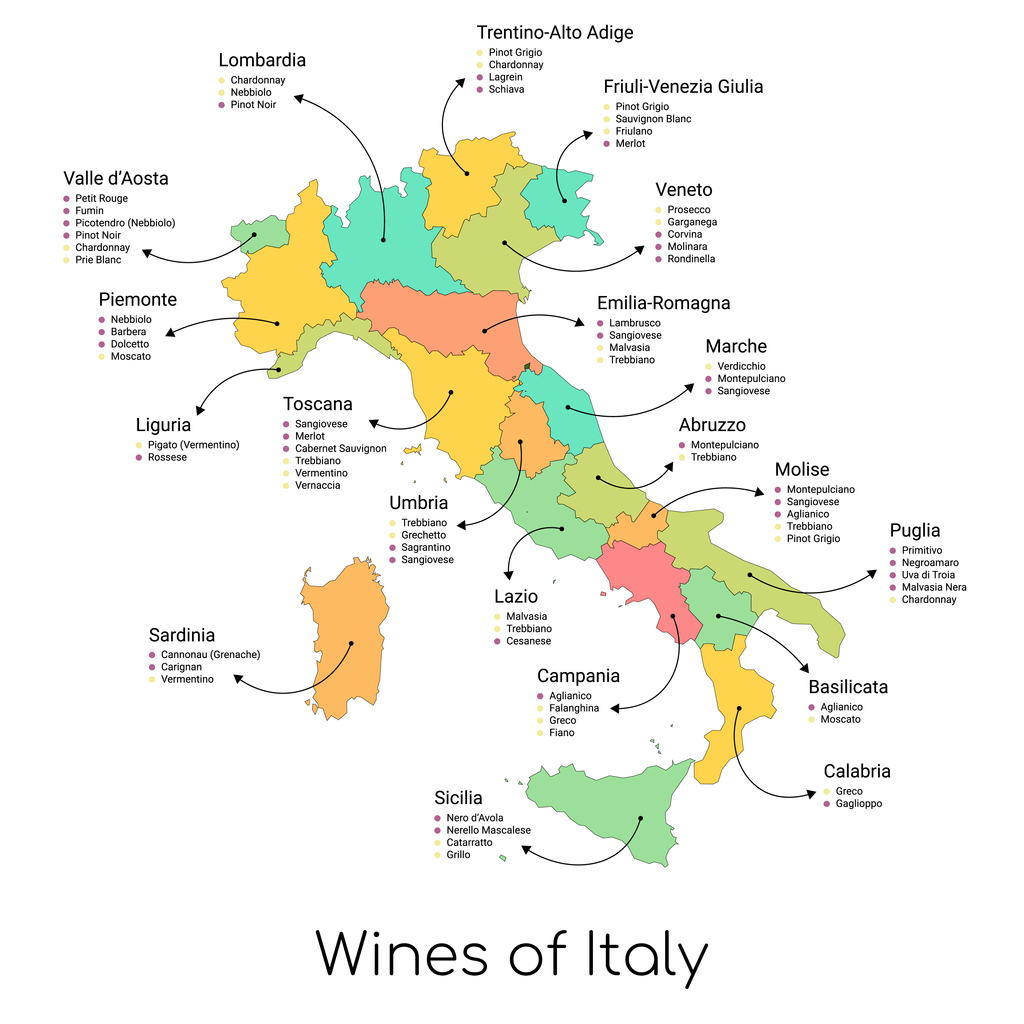
What sets Sangiovese wine apart is its incredible food-friendliness. Its bright acidity makes it an ideal partner for a range of cuisines, particularly those from Italy where it naturally shines alongside tomato-based sauces or roasted meats.
Understanding Chianti Wine
Chianti wine, originated in the picturesque region of Tuscany, Italy, is not just any ordinary red wine; it embodies centuries of winemaking history and tradition.
Made primarily from Sangiovese grapes, Chianti is known for its vibrant acidity and rich flavors that can range from cherry and raspberry to earthy tasting notes of leather and tobacco.
It’s no wonder that this remarkable varietal has captured the hearts of wine enthusiasts all over the world.
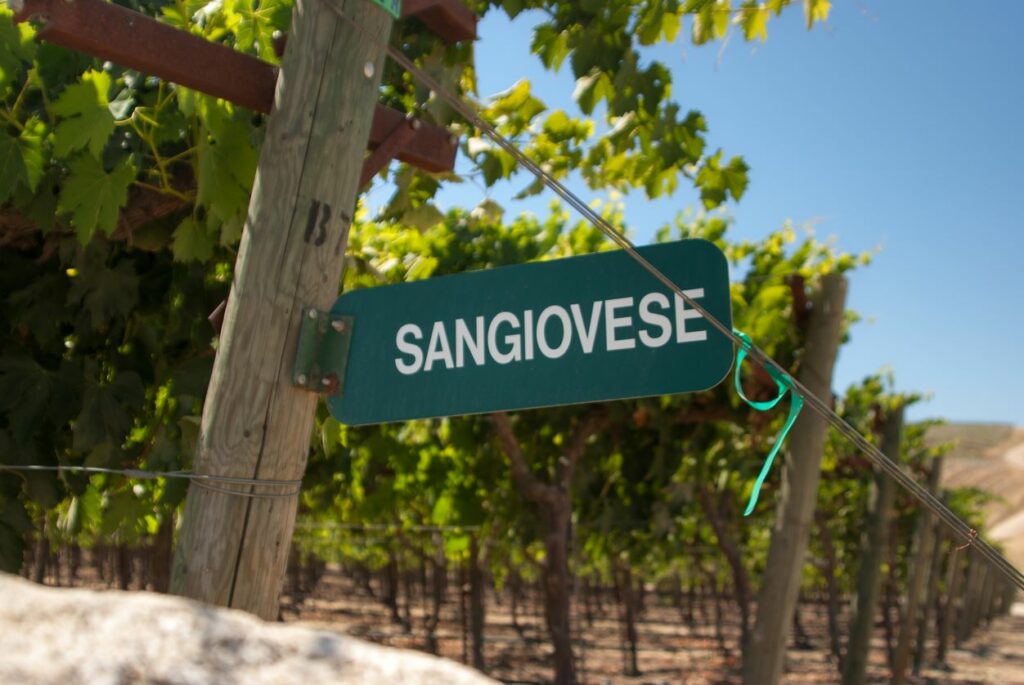
One fascinating aspect of Chianti red wine lies in its diversity. Within the Chianti region, there are several subzones that produce distinct styles of this enchanting red elixir. For instance, wines labeled as Chianti Classico provide a sangiovese taste of the traditional style with bright acidity and firm tannins.
On the other hand, if you explore Chianti Rufina, you’ll discover wines with a more refined character and delicate floral aromas.
Moreover, Chianti doesn’t shy away from innovation either. Winemakers have been experimenting with aging techniques and blending different grape varieties to create exciting new expressions while still staying true to their regional identity.
This blend of tradition and innovation allows for endless possibilities when it comes to indulging in a glass or two of Chianti wine.
Wine making of Sangiovese vs Chianti Wine
Sangiovese wine and Chianti wine are often confused with one another due to their close association, but they do have distinct differences that make each one intriguing in its own right.
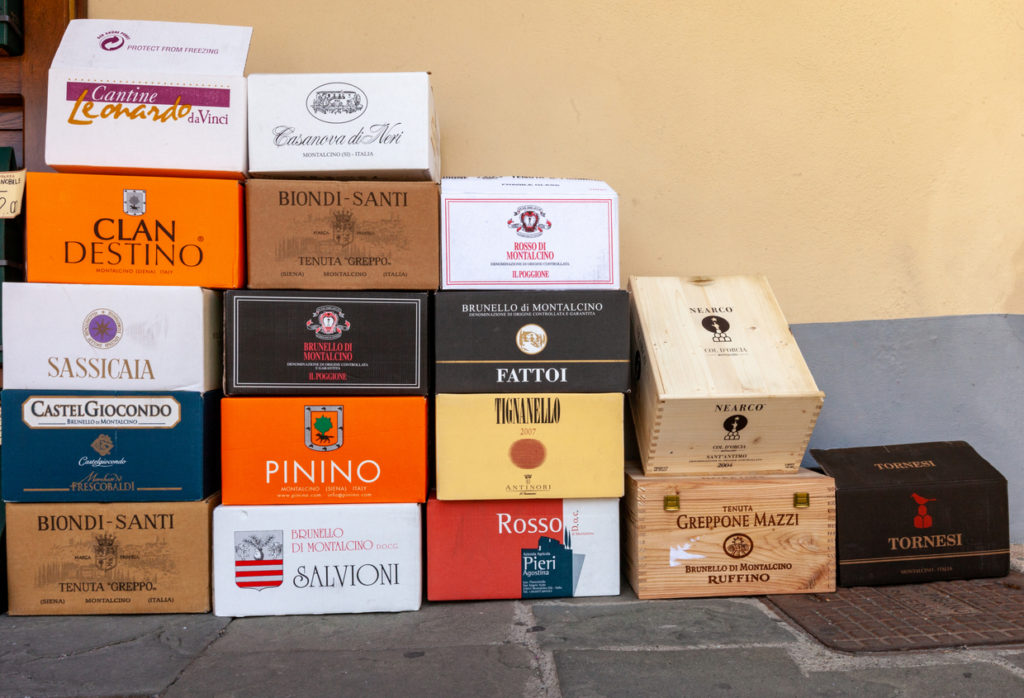
One key factor that sets them apart is the oak aging process. While Sangiovese wines can be aged in either oak barrels or steel tanks, Chianti wines traditionally undergo a longer period of maturation in oak barrels. This additional time spent in wood imparts a subtle complexity and enhances the wine’s aromatic profile.
Another noteworthy distinction lies in the preferred method of fermentation for these two wines. Sangiovese grapes are known for their vibrant acidity and pronounced cherry flavors – characteristics that are preserved by fermenting the juice primarily in steel tanks. This approach allows for a more fruit-forward expression, showcasing the natural qualities of the grape variety. In contrast, Chianti wines often incorporate other red grape varieties such as Canaiolo or Colorino in addition to Sangiovese, lending them greater tannic structure and broader flavor profiles.
While both Sangiovese and Chianti wines share a common heritage, it is these nuances that distinguish one from the other, resulting in unique tasting experiences.
Another noteworthy distinction lies in the preferred method of fermentation for these two wines. Sangiovese grapes are known for their vibrant acidity and pronounced cherry flavors – characteristics that are preserved by fermenting the juice primarily in steel tanks.
What is Chianti Superiore?
Chianti Superiore is a prestigious appellation within the famed Italian wine region of Tuscany. Renowned for its exceptional quality and distinctive flavor profile, this wine is produced in strict adherence to regulations that govern its production.
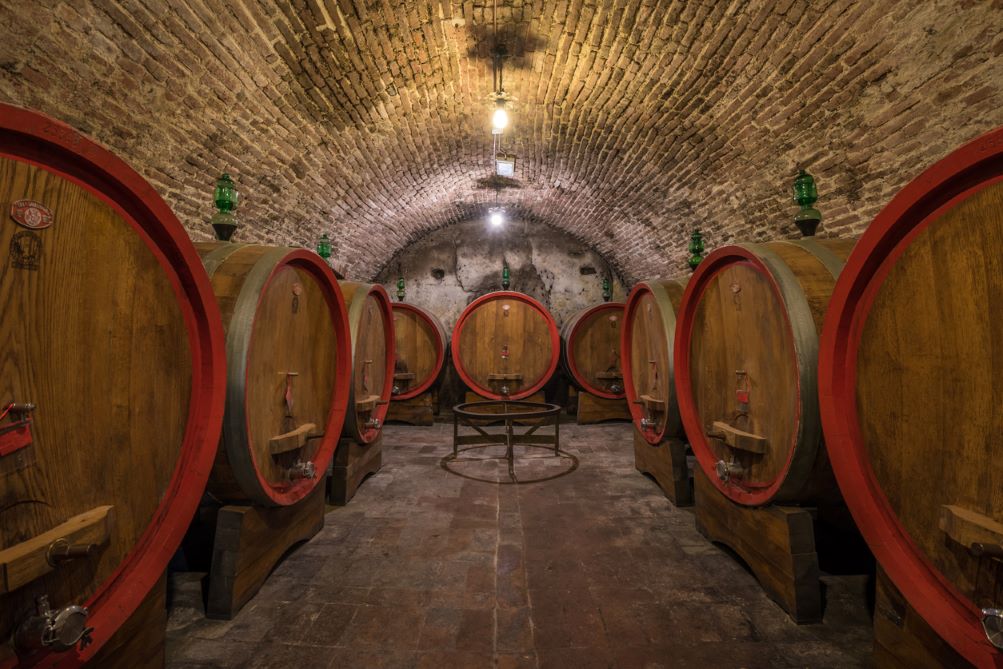
One key aspect that sets Chianti Superiore apart is the specific subzones where its grapes are cultivated. The diverse terroir of these subzones contributes to the complex character of the wine, offering nuances and depth not found in standard Chianti.
Chianti Superiore Subzones
The subzones of Chianti Superiore, including Rufina, Colli Senesi, and Colli Fiorentini, offer a diverse array of terroirs that contribute to the unique character of each wine. The Rufina subzone, characterized by its hilly terrain and cooler climate, produces wines based on the sangiovese grape variety with a lively acidity and elegant structure.
Meanwhile, the Colli Senesi subzone is known for its warmer climate and clay-rich soil, resulting in luscious wines with soft tannins and bold flavors.
In contrast, the Colli Fiorentini subzone boasts a mix of soils that give rise to complex and multi-layered wines with a harmonious balance of fruitiness and earthy undertones. Each subzone brings something distinctive to the table, reflecting its own microclimate and geological influences.
What is a Super Tuscan?
Super Tuscan wines are a unique and illustrious category of Italian wines that emerged in the 1970s. What sets these wines apart is their non-traditional blend, often incorporating international red grape varieties such as Cabernet Sauvignon, Merlot and Cabernet Franc alongside indigenous Italian grapes.
Spirit behind Super Tuscan Wines
The rebellious spirit behind Super Tuscans has sparked a revolution in winemaking, challenging the notion that exceptional wine must adhere to strict guidelines. By combining traditional and non-traditional grape varieties as cabernet sauvignon, winemakers have redefined what it means to produce high-quality Italian wine.
The result is a collection of dynamic and expressive wines that showcase the diversity of the Tuscan terroir while captivating enthusiasts with their rich, modern twist on tradition.
What Is the Difference Between Chianti and Super Tuscans?
Sangiovese and Super Tuscans both originate from the iconic Italian region of Tuscany but differ significantly in their composition and production. Sangiovese stands as the backbone of traditional Tuscan wines, renowned for its bright acidity, cherry flavors, and distinctive earthiness.
Cabernet Sauvignon vs Sangiovese
In contrast, Super Tuscans emerged in the 1970s as a departure from tradition. Unlike Chianti they often feature international grape varieties such as Cabernet Sauvignon and Merlot. This innovative approach resulted in richer, more complex cabernet sauvignon based wines that deviate from the restrictive regulations governing traditional Tuscan wine production.
Key Differences Chianti Classico vs Super Tuscans
The key differentiator lies in their blending composition. While wines based on sangiovese grapes wines remain loyal to Italy’s indigenous grape varieties, Super Tuscans embrace a Bordeaux-inspired cabernet sauvignon and merlot blend.
Vino nobile di montepulciano vs Brunello di montalcino
When it comes to Italian red wines, Vino Nobile di Montepulciano and Brunello di Montalcino are true gems that showcase the beauty of the Sangiovese grape. While both wines originate from the picturesque region of Tuscany, they offer distinct characteristics that make them stand out in their own right.
Vino Nobile di Montepulciano exhibits a medium-bodied profile with lively acidity and a rich, complex flavor profile that includes savory notes of cherry, plum, and earthy undertones.

On the other hand, Brunello di Montalcino is known for its full-bodied nature and robust tannins, offering intense flavors of fruit forward dark cherry, leather, and spice. Sangiovese grosso grapes which have a thicker skin than sangiovese grapes are used for Brunello wines,
The aging process also sets them apart – Vino Nobile requires at least two years of aging before release while Brunello demands a minimum of four years.
Another noteworthy distinction lies in the preferred method of fermentation for these two wines. Sangiovese grapes are known for their vibrant acidity and pronounced cherry flavors – characteristics that are preserved by fermenting the juice primarily in steel tanks.
What is Chianti Superiore?
Chianti Superiore is a prestigious appellation within the famed Italian wine region of Tuscany. Renowned for its exceptional quality and distinctive flavor profile, this wine is produced in strict adherence to regulations that govern its production.
One key aspect that sets Chianti Superiore apart is the specific subzones where its grapes are cultivated. The diverse terroir of these subzones contributes to the complex character of the wine, offering nuances and depth not found in standard Chianti.

Chianti Superiore Subzones
The subzones of Chianti Superiore, including Rufina, Colli Senesi, and Colli Fiorentini, offer a diverse array of terroirs that contribute to the unique character of each wine. The Rufina subzone, characterized by its hilly terrain and cooler climate, produces wines based on the sangiovese grape variety with a lively acidity and elegant structure.
Meanwhile, the Colli Senesi subzone is known for its warmer climate and clay-rich soil, resulting in luscious wines with soft tannins and bold flavors.
In contrast, the Colli Fiorentini subzone boasts a mix of soils that give rise to complex and multi-layered wines with a harmonious balance of fruitiness and earthy undertones. Each subzone brings something distinctive to the table, reflecting its own microclimate and geological influences.
What is a Super Tuscan?
Super Tuscan wines are a unique and illustrious category of Italian wines that emerged in the 1970s. What sets these wines apart is their non-traditional blend, often incorporating international red grape varieties such as Cabernet Sauvignon, Merlot and Cabernet Franc alongside indigenous Italian grapes.
Spirit behind Super Tuscan Wines
The rebellious spirit behind Super Tuscans has sparked a revolution in winemaking, challenging the notion that exceptional wine must adhere to strict guidelines. By combining traditional and non-traditional grape varieties as cabernet sauvignon, winemakers have redefined what it means to produce high-quality Italian wine.
The result is a collection of dynamic and expressive wines that showcase the diversity of the Tuscan terroir while captivating enthusiasts with their rich, modern twist on tradition.
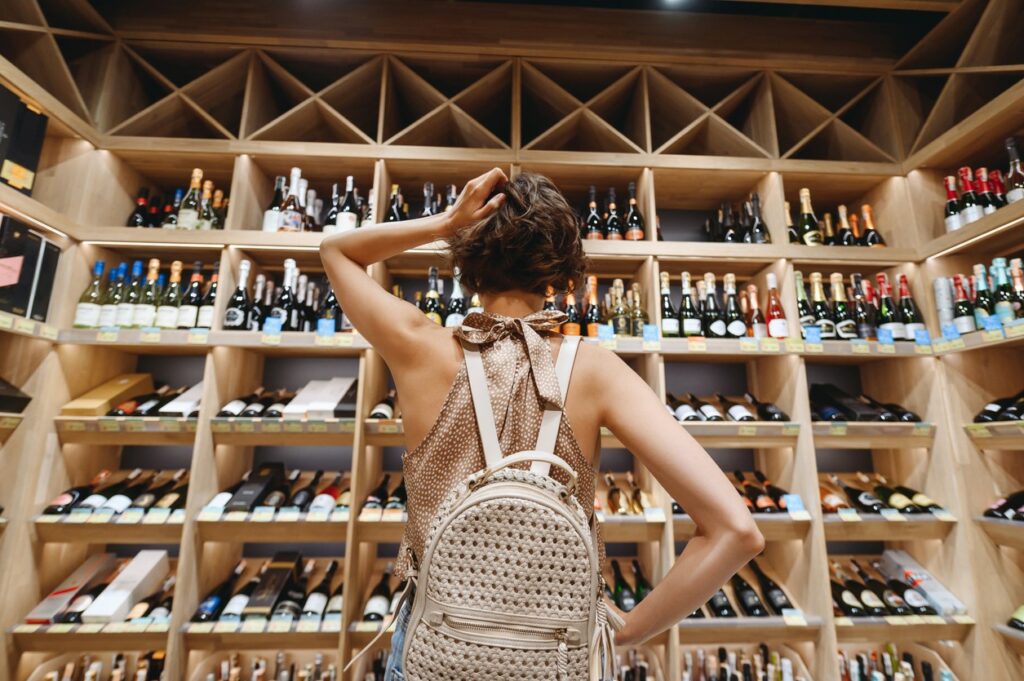
What Is the Difference Between Chianti and Super Tuscans?
Sangiovese and Super Tuscans both originate from the iconic Italian region of Tuscany but differ significantly in their composition and production. Sangiovese stands as the backbone of traditional Tuscan wines, renowned for its bright acidity, cherry flavors, and distinctive earthiness.
Cabernet Sauvignon vs Sangiovese
In contrast, Super Tuscans emerged in the 1970s as a departure from tradition. Unlike Chianti they often feature international grape varieties such as Cabernet Sauvignon and Merlot. This innovative approach resulted in richer, more complex cabernet sauvignon based wines that deviate from the restrictive regulations governing traditional Tuscan wine production.
Key Differences Chianti Classico vs Super Tuscans
The key differentiator lies in their blending composition. While wines based on sangiovese grapes wines remain loyal to Italy’s indigenous grape varieties, Super Tuscans embrace a Bordeaux-inspired cabernet sauvignon and merlot blend.

Vino nobile di montepulciano vs Brunello di montalcino
When it comes to Italian red wines, Vino Nobile di Montepulciano and Brunello di Montalcino are true gems that showcase the beauty of the Sangiovese grape. While both wines originate from the picturesque region of Tuscany, they offer distinct characteristics that make them stand out in their own right.
Vino Nobile di Montepulciano exhibits a medium-bodied profile with lively acidity and a rich, complex flavor profile that includes savory notes of cherry, plum, and earthy undertones.
On the other hand, Brunello di Montalcino is known for its full-bodied nature and robust tannins, offering intense flavors of fruit forward dark cherry, leather, and spice. Sangiovese grosso grapes which have a thicker skin than sangiovese grapes are used for Brunello wines,
The aging process also sets them apart – Vino Nobile requires at least two years of aging before release while Brunello demands a minimum of four years.
Meat and Tomato based food
This makes it extremely versatile when it comes to pairing with a wide range of dishes. One classic pairing is with tomato-based Italian dishes like pasta with marinara sauce or pizza margherita. The acidity of the wine cuts through the richness of the tomatoes, while its tannins complement the savory flavors.
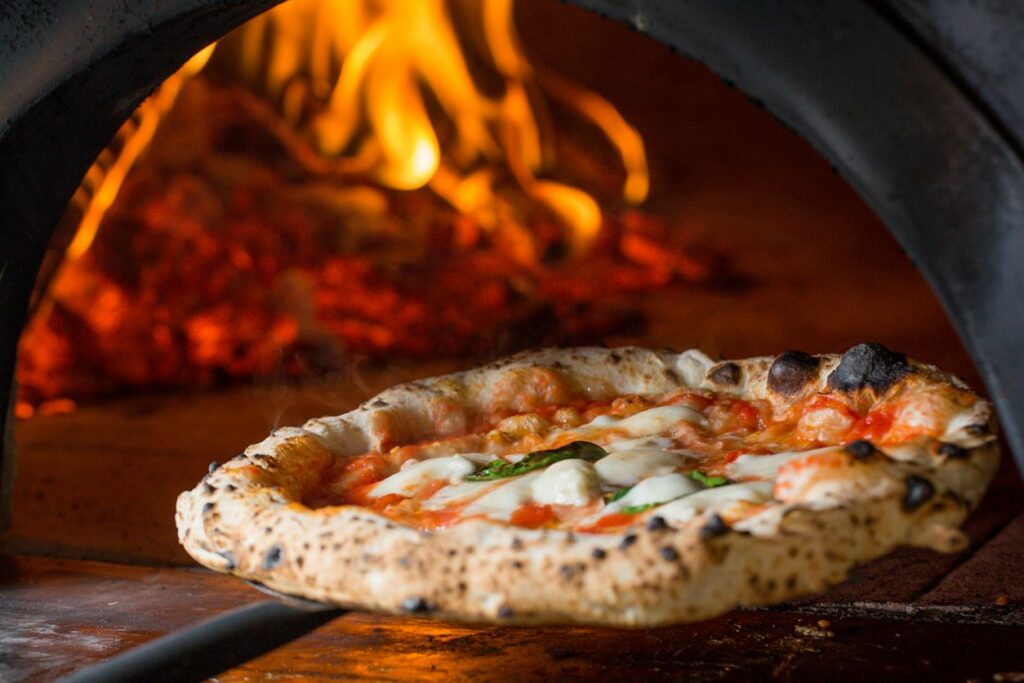
Chianti wines also have a unique ability to pair well with meats. Whether you’re having grilled steak or roasted lamb, these wines enhance and elevate the flavors of meat dishes. Their bold fruit flavors like cherries and strawberries provide a delightful contrast to red meat’s richness, while their acidity helps cut through any fattiness present in the dish.
Ageing Potential
While young Chiantis can be incredibly fruity and fresh, aged ones develop more complex flavors that make them an excellent match for more robust foods like stews or aged cheeses.
The earthy undertones and hints of spice that emerge over time add depth to these pairings, creating a truly harmonious dining experience.
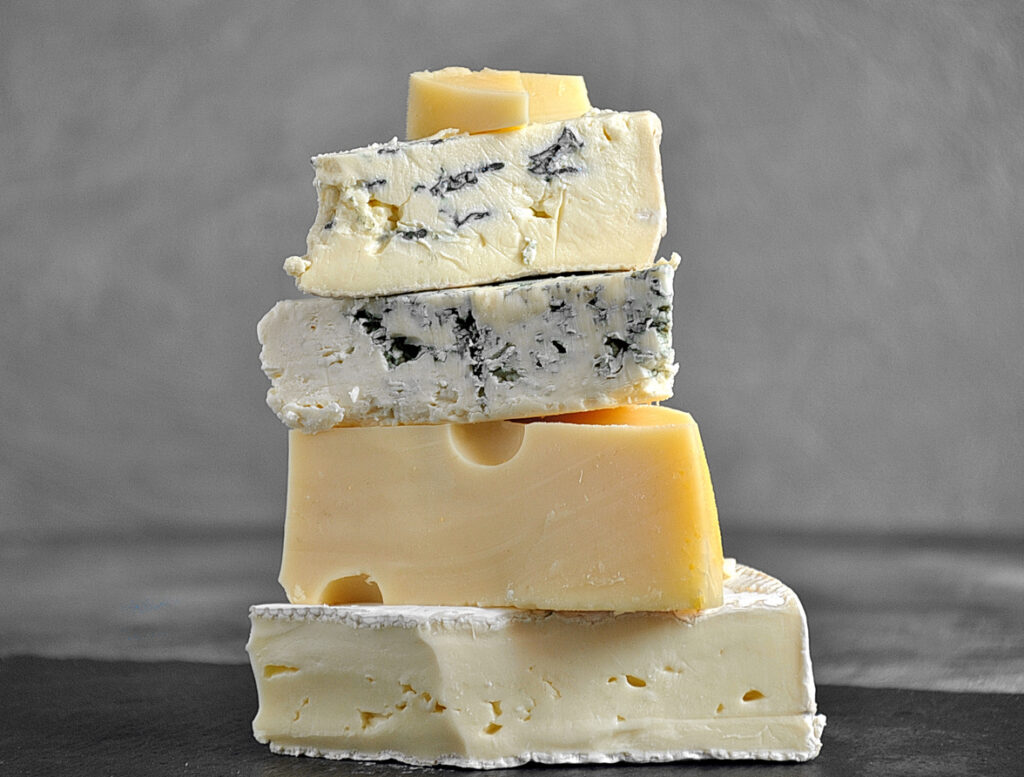
Whether you’re enjoying a simple pasta dish or indulging in a rich meat feast, Sangiovese-based Chianti wines offer fantastic food-pairing options for every occasion.
How to serve Sangiovese vs Chianti Wine
When it comes to serving Sangiovese and Chianti wines, there are a few factors to consider that can greatly enhance your drinking experience.
Temperature
Firstly, the temperature at which these wines are served plays a crucial role in bringing out their flavors. Both Sangiovese and Chianti wines should be served slightly below room temperature, around 60-65°F (15-18°C). This allows the fruit flavors of great wine to shine through without being overwhelmed by alcohol or tannins.

Decanting
Decanting wine is a topic that often sparks debate among wine enthusiasts. When it comes to Sangiovese vs Chianti, the discussion becomes even more intriguing. Sangiovese, the flagship grape of Italy, is known for its bright acidity and vibrant fruit flavors. Chianti, on the other hand, is a specific style of wine made primarily from Sangiovese grapes in the Chianti region of Tuscany. So, should you decant these wines or not?
Do you decant Chianti Wines?
When it comes to Chiantis specifically, some experts argue against decanting. They believe that pouring them straight from the bottle best preserves their signature characteristics based on sangiovese grapes such as cherry notes and lively acidity. However, others contend that younger Chiantis can benefit from decanting. This helps to integrate any harsh tannins present in the wine, creating a smoother drinking experience.

Conclusion
In conclusion, the comparison between Sangiovese and Chianti wines reveals the unique characteristics and qualities of both. Sangiovese is a versatile grape that can be used to create various styles of wine. Chianti stands out as a distinct red wine with its specific production regulations and regional identity. Sangiovese exhibits flavors of cherry, plum, and earthiness, while Chianti showcases additional tasting notes of herbs and spice. Both wines pair well with Italian dishes and can be enjoyed on their own. Whether you prefer the simplicity of Sangiovese or the complexity of Chianti, exploring these wines will undoubtedly enhance your appreciation for Italian winemaking traditions. Cheers to discovering your perfect Italian sip!

